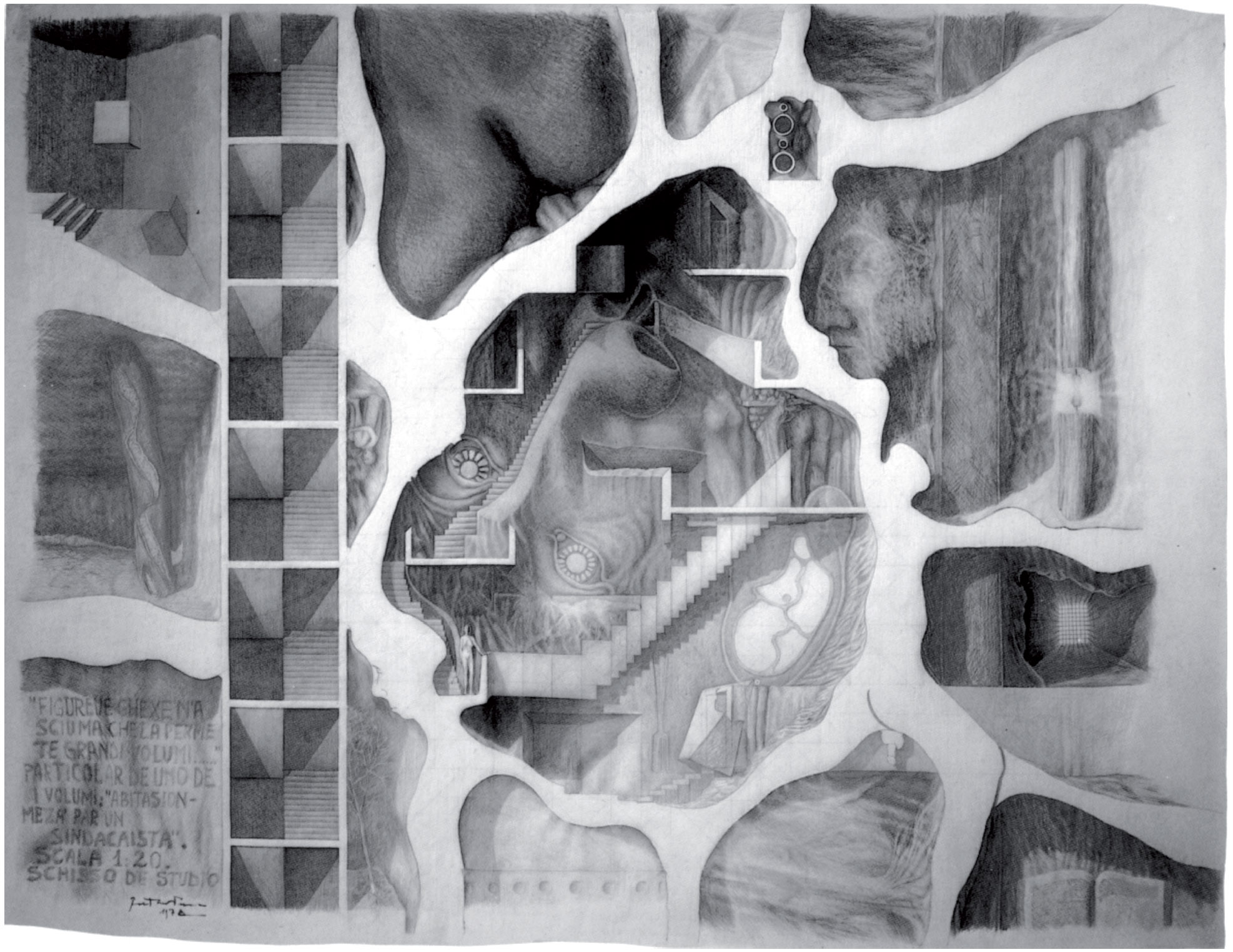Gaetano Pesce was born in La Spezia in 1939, Italy, but spent much of his life in New York City. He studied architecture at the University of Venice, under Carlo Scarpa and Ernesto Rogers, between 1958 and 1963. He participated in Gruppo N, an early collective concerned with programmed art patterned after the Bauhaus. He researched the function and form of architecture and utilitarian objects.
Today, I would like to remember his participation in “Inventionen. Piranesi und Architektur Phantasien in der Gegenwart” (“Inventions. Piranesi and architectural fantasies of the present") an exhibition in Hannover, Germany, in which the proposals by Raimund Abraham, Gaetano Pesce, Adolfo Natalini (Superstudio), Günter Günschel, Hans Dieter Shaal, Peter Cook and Christine Hawley, OMA (Office for Metropolitan Architecture), Rem Koolhaas, Daniel Libeskind, Gerd Neuman, and Giovanni Battista Piranesi.
Gaetano Pesce constantly experimented with new materials from the beginning, trying to redefine the architectural language through innovation in construction with these materials.
Today, I would like to remember his participation in “Inventionen. Piranesi und Architektur Phantasien in der Gegenwart” (“Inventions. Piranesi and architectural fantasies of the present") an exhibition in Hannover, Germany, in which the proposals by Raimund Abraham, Gaetano Pesce, Adolfo Natalini (Superstudio), Günter Günschel, Hans Dieter Shaal, Peter Cook and Christine Hawley, OMA (Office for Metropolitan Architecture), Rem Koolhaas, Daniel Libeskind, Gerd Neuman, and Giovanni Battista Piranesi.
Gaetano Pesce constantly experimented with new materials from the beginning, trying to redefine the architectural language through innovation in construction with these materials.
"Among his contributions to the exhibition were, among others, dreamlike drawings and some bas-reliefs, with an evident Gaudian or Dalinian influence depending on the case, but always identified under the idea of presenting themselves as manifest projects, critical of functionalism and rationalism. Among these proposals was that of a skyscraper for New York that would be located on the site of the Seagram Building, a megastructure with a volume of 41,500 cubic meters made of polyurethane foam, in which the creation of the architectural space would be the result not of the addition of pieces and construction elements, but rather the extraction of material, the generation of voids in the created mass. The result was intended to propose a changing architecture, where spaces would be generated by the creation of those voids and not by the sum of volumes.

Project for a skyscraper in Manhattan. Rubber model, 350 x 160 cm, Gaetano Pesce.
In four or five days the volume will reach the necessary strength, and it will be possible to place from one side to the other, other volumes linked to each other by stairs, elevators and other facilities; Such volumes are emptied of their matter and form new structures with a hardened mold that allows them to fit into others,…
It is a skyscraper formed by the superposition of organic masses and determined by contrast with its surroundings. Why continue to accept, for example, the possibilities of presenting architecture as a set of already decided facts?
It is a skyscraper formed by the superposition of organic masses and determined by contrast with its surroundings. Why continue to accept, for example, the possibilities of presenting architecture as a set of already decided facts?
Gaetano Pesce's set of proposals was accompanied by critical and pessimistic reflections towards conventional construction systems, demonstrating more than ever that the possibilities of technology now allowed greater freedom for the architect to think and create new architectural spaces, posing to society the possibility of a structure without limits, of infinite, continuous spaces, which would generate new forms of architecture."
(Excerpt from chapter: 3 Inventions from the book:
"José Juan Barba. "Inventions: New York vs. Rem Koolhaas, Bernard Tschumi, Piranesi." Ed. UAH: 2015, pp. 65 - 97.)
"José Juan Barba. "Inventions: New York vs. Rem Koolhaas, Bernard Tschumi, Piranesi." Ed. UAH: 2015, pp. 65 - 97.)
Gaetano Pesce was the winner of the 2023 Andrée Putman Lifetime Achievement Award.

“Sketch for the Seat of a Political Party”. Pencil, 70 x 80 cm, Gaetano Pesce.































